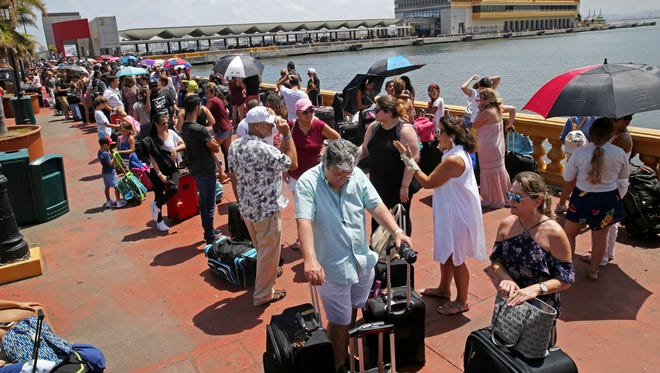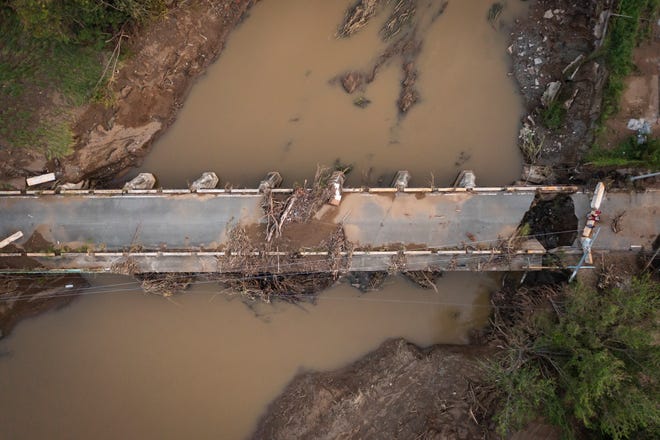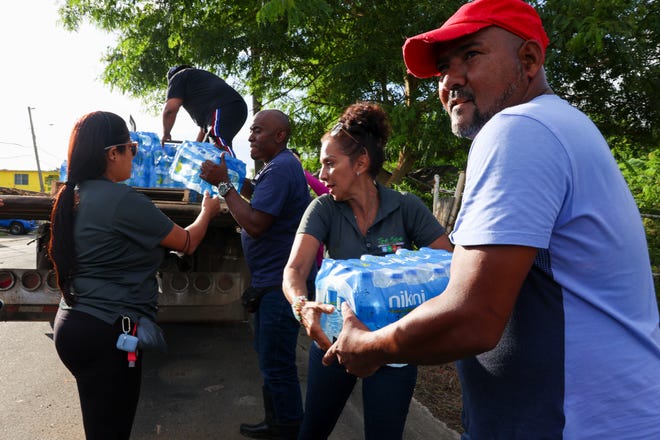Five years after Hurricane Maria devastated Puerto Rico, the island is dealing with the damage of yet another destructive storm.
Hurricane Fiona struck the U.S. territory Monday, killing four, triggering mudslides and crushing bridges while displacing more than a thousand and leaving more than a million residents without power.
Some wonder whether the storm will prompt the kind of exodus seen after Hurricane Maria. In the wake of that hurricane, more than 123,000 Puerto Ricans permanently relocated to U.S. states, especially New York and Florida, according to U.S. Census Bureau estimates.
And according to a new USA Today analysis of 2020 Census results, every single municipio—Puerto Rico’s equivalent of a county—lost population after Maria compared to the 2010 Census.
Why do Puerto Ricans leave the island?
The island’s numbers actually have been in decline ever since the U.S. territory reached its peak population in 2004, according to a Pew Research Center study, falling to about 3.2 million by 2018. Economic conditions there – notably a mid-2000s recession whose effects still linger – have been driving people off the island long before Hurricanes Irma and Maria struck in September 2017.
Some have left more recently, frustrated by what they see as the local government’s ongoing failure to deal with the aftermath.
Marla Perez-Lugo, born in Santurce and raised in Mayaguez, left Puerto Rico last year. Once co-director of Puerto Rico’s National Institute for Energy and Island Sustainability, she now works as a sociology professor at the University of Texas Rio Grande Valley.
“What pushed me out was the impotence of not being able to contribute to my island recovery and reconstruction,” she said.
Previously reported Census data showed nearly 440,000 fewer residents in Puerto Rico over the past decade, a loss of about 12% of the population. Over that period, a majority of the island’s municipios saw losses of greater than 10%, and nearly all lost more than 1,000 residents.
Will Puerto Ricans leave the island again?
Elizabeth Aranda, a professor of sociology at the University of South Florida, said she guessed the storm will be a catalyst for anyone already thinking about leaving Puerto Rico.
“It depends how quickly power and water can be restored, and how quickly children can get back to school and people to work,” she said.
Those who rely more on electricity – such as those with chronic health conditions or disabilities – may find it harder to subsist without power, she said, and will be more apt to leave.
Fernando Rivera, a sociology professor at the University of Central Florida, agreed.
“As days without electricity and water are prolonged along with rising temperatures and the potential of other rain events, there is a high likelihood that those with family and friends in New York or Florida will come stateside to seek some relief, particularly those dealing with health issues,” he said.
Alexandra Lúgaro, 41, executive director of the Foundation for Puerto Rico’s Center for Strategic Innovation and a former gubernatorial candidate, said some might leave for specific reasons, such as those taking elderly relatives to the mainland for hospital care.
But she doesn’t think this hurricane will spark another wave of permanent migration.
“It’s different from Maria,” Lúgaro said. “Because of its winds, you could see everything torn down. A lot of people couldn’t see how they could just rebuild.”
Fiona’s water damage doesn’t seem as daunting, she said.
“On the contrary, I think there’s a lot of motivation to say, ‘Let’s dry this off. Let’s fix it. Let’s help the people who lost everything,’” Lúgaro said. “I don’t see that Maria mood of, ‘I need to leave Puerto Rico, because there’s no way we can rebuild.’”
What will happen next in Puerto Rico?
For Puerto Rico, Fiona is the latest in a long series of crises. After Hurricanes Irma and Maria, a wave of earthquakes rattled the island in 2019 and 2020; then came the COVID-19 pandemic.
“My guess is the Puerto Rican people are weary and that there is growing dissatisfaction, even anger, toward the government for failure to make more progress since Hurricane Maria,” Aranda said. “Those who have the means to leave and desire to do so will in fact leave. But this is nothing new. Puerto Ricans have been exiting the island for decades.”
As with Hurricane Maria, some relocation may occur only temporarily as people wait out recovery efforts. But should most of out-migration endure, Rivera said, that would hamper the territory’s ability to rebound from previous economic struggles and meet public debt obligations, particularly those set by Puerto Rico’s financial oversight board.
“Time is of the essence to restore basic utilities and build confidence that the island can move forward,” he said. “The diaspora in Central Florida is already gearing up to help those on the island and those who decide to come here.”
There are already more Puerto Ricans living on the United States mainland than on the island itself. According to the Pew Center, the number of Puerto Ricans living in the states increased from 3.4 million to 5.6 million from 2000 to 2017.
What does Puerto Rican migration mean for the US?
In a 2020 study of Orlando, Florida, researchers at the University of California, Davis, found that the Puerto Rican influx after Hurricane Maria increased overall employment, raising construction employment in particular by 4%.
“We found that the inflow of Puerto Ricans in Orlando after Maria had helped the economy grow, especially sectors like retail and hospitality, as those people increased demand for local services and were soon employed,” said economics professor Giovanni Peri, lead author of the study.
Among the factors accounting for the group’s successful absorption, Peri said, were their legal working status and a welcoming community that readily connected them to employment opportunities in a growing local economy.
He said those factors are in place again now – if not more so, given the Florida economy’s current shortage of workers and unfilled jobs in the hospitality and construction sectors.
“If people from Puerto Rico go to some of the same places, they may have an even stronger effect in stimulating the local economy and finding jobs,” Peri said.




